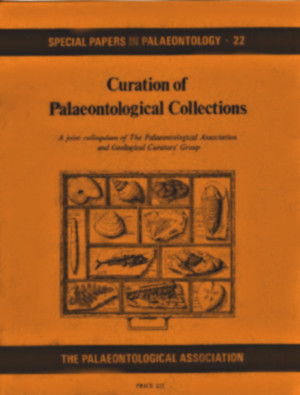Reg. Charity No. 1168330

Variations in the environment within museums can cause significant damage to palaeontological material. The deterioration of sub-fossil bone occurs within a short time of exposure to air at relative humidities below 45%. Fossil specimens containing predominantly framboidal and microcrystalline pyrite are susceptible to deterioration when stored at relative humidities of 60% and above, and observation shows that the oxidation of pyrite in air is more consistent with electrochemical rather than bacterial causation. Small pyritic specimens can be safely stored in silicone fluid but the conservation of larger specimens requires rigid control of relative humidity in storage or exhibition environment. The failure of conventional consolidants in the protection of moisture-sensitive material can be explained by the high permeability of plastic films to water vapour. Deterioration of calcareous specimens through the efflorescent growth of calclacite (and related compounds) may be caused by storage in oak cases.